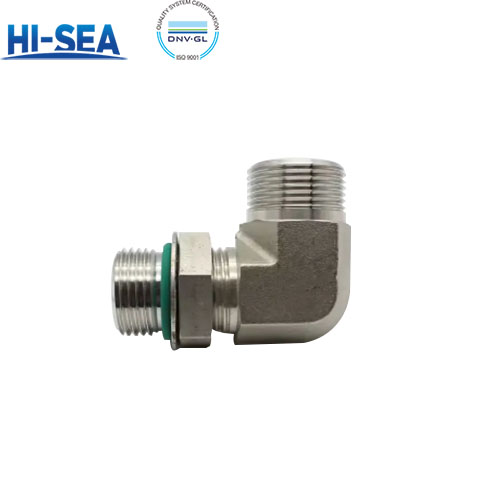
M-C5OMLO Male Stud Elbow
This type of joint is usually used in situations where the direction of fluid flow needs to be changed, such as water pipes, pneumatic systems, etc. The materials of right angle external thread joints are diverse, including stainless steel 304, 316 stainless steel, carbon steel, plastic, etc., to meet the needs of different applications.
Overview
Installation steps:
1.Preparation: Ensure that the external threads and sealing surfaces of the joints and pipes are clean, free from impurities or damage.
2.Application of sealing material: Apply a layer of sealing material, such as polytetrafluoroethylene (PTFE) thread sealant, on the external threads of the joint to provide better sealing performance and prevent leakage.
3.Determine tightening direction: Based on the pipeline system that needs to be connected, determine the tightening direction between the joint and the pipeline, usually using rubber washers and nuts to prevent leakage.
4.Inserting the pipeline: Insert the end of the pipeline into the threaded hole of the joint, ensuring that it is inserted to the appropriate depth and that the thread of the joint matches the thread of the pipeline.
5.Tighten the joint: Use a suitable tool, such as a wrench, to rotate the joint counterclockwise to match the pipe thread and tighten it. During the tightening process, moderate force should be applied to ensure a tight connection and avoid excessive tightening that may cause thread damage.
6.Check sealing performance: After installation, check the sealing performance between the joint and the pipeline. Leakage detection can be performed using methods such as pressure testing or applying soapy water. If a leak is found, it is necessary to check whether the threads are tightened or replace the sealing material.
Pictures:






